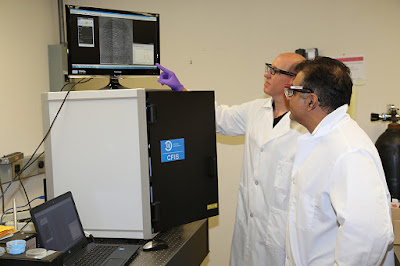 |
| Photo Credit: ECBC, U.S. Army |
Edgewood Chemical Biological Center (ECBC) researchers have created a powerful new fingerprint and chemical trace analysis tool that is fully automated and portable. The system was created for the U.S. Armed Forces’ fight against terrorism, but may well end up being used for airport security and law enforcement as well.
U.S. and Coalition forces investigating a possible insurgent for suspicion of planting an IED have often lacked enough evidence to detain a suspect with a fingerprint check. The additional proof needed is the detection of micro particles of bomb-making chemical components that get embedded between the grooves of the fingerprint.
The much needed chemical analysis is now possible in the field with the new Criminal Fingerprint Imaging System. The system is the size of a small room refrigerator. Fingerprints captured are sent electronically to the FBI’s Integrated Automated Fingerprint Identification System to check for a match.
The chemical testing is down with Raman spectroscopy. A laser light is shined on the fingerprint. The laser light interacts with the molecular vibrations of the substance residue, causing the laser light to shift slightly. The slight shift reveals the molecular bonds of the particles, leading to the identification of the molecules.
A person can run the automated system with minimal training. In 30 minutes, the fingerprint check and the analysis of up 100 micro-particles is complete.
Jason Guicheteau, PH.D., the lead research chemist for the team, says the team plans to reach out to commercial vendors in 2018 to build the Generation II system. The second generation system will be smaller, have more sensitivity on a greater range of explosives and narcotics, and work on curved surfaces, such as a can or water bottle.
Nov. 27, 2017 by ECBC Public Affairs | U.S. Army Research Development and Engineering Command


